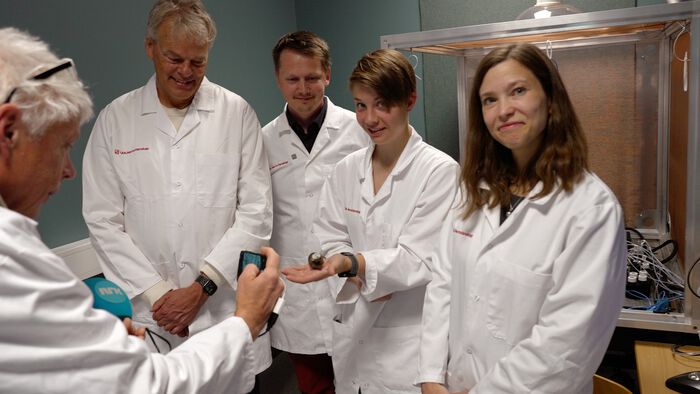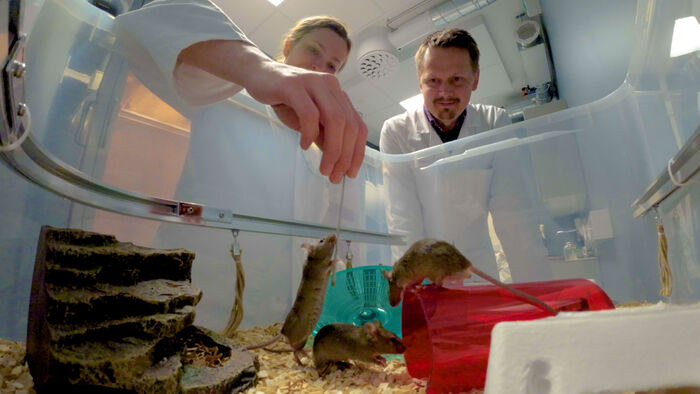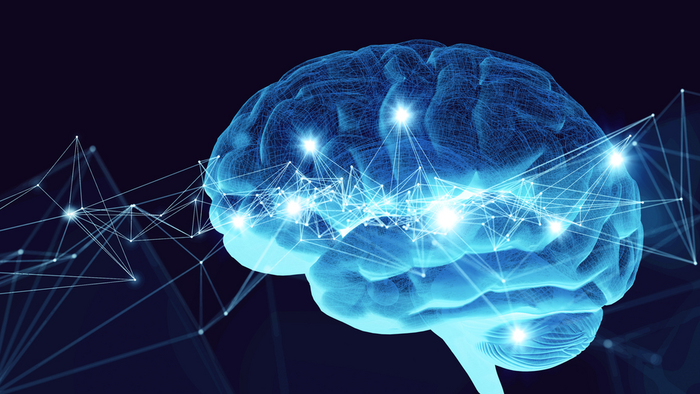DSyNC (Dynamical Systems Neuroscience Collaboratory) is a brain research laboratory that was established at UiA in Kristiansand in 2022. It is led by researchers Hanne and Tor Stensola.
Contact
- hanne.stensola@uia.no
- Phone
- +47 38 14 10 28
- tor.stensola@uia.no
- Phone
- +47 38 14 10 27
At DSyNC, we work to understand how sensory processes and learning are controlled by internally generated processes. We use the olfactory system in mice as a model system, and are interested in how statistical learning is used both algorithmically and biologically in cell networks in the cerebral cortex. More specifically, we are interested in how sensory representations are linked to identity (odor objects) and how identity representations are formed.
Natural odors typically consist of hundreds of different chemicals. How the brain establishes which of these best defines specific odor objects over time, and best separates these from other odor objects, we have only now begun to understand.
It is now well established that some of these processes, known as 'pattern completion' and 'pattern separation', operate in the first part of the olfactory cortex, but the principles of how these arise and operate at the cellular level are completely unknown.
To study these processes, we use high-yield "in vivo" electrophysiology in awake mice, together with optogenetic methods to manipulate neural activity. We also use high-capacity behavioral monitoring through a virtual reality for mice we have developed, providing excellent experimental control over sensory impressions including odors.
DSyNC is the first step of a larger investment in basic neuroscientific research under the direction of UiA. This initiative was made possible by generous support from several local benefactors in Kristiansand, including Rasmussen Gruppen, the Skeie family, Sparebanken Sør and Sørlandets Kompetansefond in addition to UiA. The plan over time is to grow the neuroscience community at UiA beyond DSyNC to include several more research laboratories.
What is neuroscience?
Understanding the brain at a basic mechanistic level is the goal of our basic research. This is important on several levels. As humans and animals, we are completely defined by our brains. Understanding the brain is essentially understanding ourselves as individuals and species.
The brain's incredible properties are an exciting breeding ground for the development of new technologies. Artificial intelligence in particular has benefited from neuroscience, and many fundamental theories in artificial intelligence have their origins in neuroscience.
On the other hand, the brain is also an organ where errors can occur, which have serious consequences for the individual as well as society. Brain pathology and psychopathology cause suffering for those affected and their loved ones, and in addition creates enormous costs at the societal level.
You can't fix something you don't understand, and understanding how the brain's cell networks work is needed to be able to develop safe and effective treatment methods and reduce their side effects. This development is also beneficial for pharmacology since better understanding of brain mechanisms leads to better development of targeted preparations with better treatment effects and fewer side effects.
The body, including the brain, is usually very capable of self-correcting errors that occur within the system. Neuroscientific insights may help us understand how we can better use the brain's own healing processes to prevent problems that today require medication or other interventions.
Neuroscience is the study of the central nervous system including the brain. Everything suggests that the brain is the origin of consciousness and all experiences, feelings and memories that follow from it. How the brain uses the senses to build up an experience and understanding of reality is one of the central questions in neuroscience.
Research over the past few decades has shown that perception is critically dependent on activity that occurs within the brain itself, not just that which is initiated through the sensory organs. Current theories state that this internal activity is necessary to categorize sensory impressions and use these to predict what will happen in the future. This is important, among other things, because the brain is bombarded with sensory impressions and must learn to prioritize what is to be processed based on expectations in order to be effective. These processes are completely dependent on different forms of learning.
Animal welfare
In our neuroscience laboratory at UiA, we use mice in our research. We use mice because their brains are quite similar to human brains. By understanding how their brains function, we can learn a great deal about our own brains.
Our researchers, Hanne and Tor Stensola, completed their doctorates with Nobel laureates May-Britt Moser and Edvard Moser at NTNU. Here, they were trained both technically and ethically to always prioritise animal welfare.
Principles of Research
In our research at the neuro lab, we adhere to three principles when conducting research with animals:
- Reduction – we use the smallest number of animals possible
- Replacement – we use alternatives to animal testing whenever feasible
- Refinement – we always employ the methods best suited to the animals’ wellbeing
Healthy Animals
In our research, we require healthy and well animals. We study how healthy and normal brains function, so it is essential that the mice are well cared for when used in research.
Scientific considerations, in other words, go hand in hand with ethical considerations for us. Our own veterinarian closely monitors the mice and their health.
Electrodes measure the brain signals of our mice. These electrodes are as thin as hairs and cause minimal damage to brain tissue when placed in the mice’s brains. The mice receive pain relief and extra care and attention after the surgery.
The electrodes are enclosed in a small and light ‘hat’ on the mice’s heads. These resemble cochlear implants used by humans, and similar technology is also used in brain surgeries on humans.
Mouse School
Mice are social creatures and enjoy living together in large groups. They also have ample space to play. We develop our own toys, furniture, and other apparatuses to stimulate the mice.
We are even creating a ‘mouse school’ where they can practice solving various tasks, so they do not experience stress or fear during our experiments. Our experiments are designed to be as positive and engaging for the mice as possible.
In short, we are very fond of the mice in UiA’s neuroscience lab. To emphasise the responsibility we have for each of them, all the mice are given their own names.
News
-
UiA’s neuro lab opened June 10, 2024 9:07 AM
"Unique research will happen here, and we're expecting big things," said Nobel laureate Edvard Moser, who formally opened UiA's new neuroscience lab today.
-
Researching the sense of smell to understand how the brain learns June 6, 2024 8:23 AM
Brain researchers hope that the sense of smell can reveal more about how the brain organises information.
-
Establishing neuroscience at UiA May 15, 2024 3:06 PM
Research couple Hanne and Tor Stensola from Kristiansand return home to establish neuroscience as a new academic field at UiA. The initiative has received 26.5 MNOK in funding from regional partners and will strengthen UiA's expertise in psychology.


